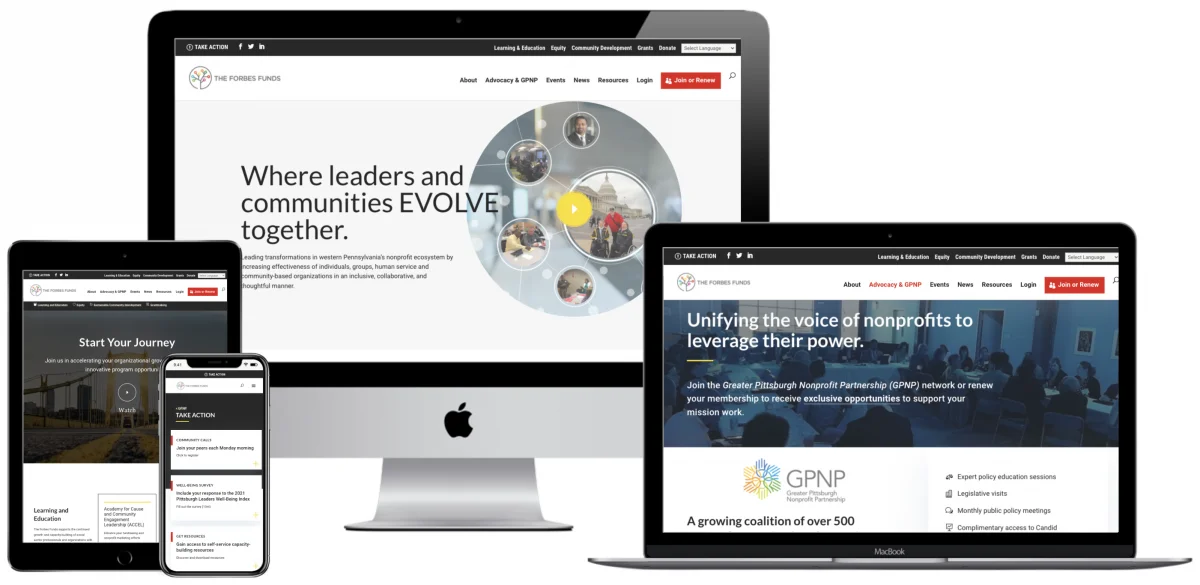A ‘conversion’ in the marketing world is someone who turns into a customer. This person buys your product or service or generally takes some action that you want them to take. There are two main types of conversions: micro and macro. We’ll get into the definitions later, but it’s important to understand that in the early days of web design, a ‘successful’ website was measured by the numbers of ‘hits.’ But, what we know today is that you may have one million unique views per day, but if no one is converting or buying your product and–by extension–you don’t know how they are converting or buying your product or service, then you’re missing the largest piece of the puzzle.
But conversions aren’t always measured in the big gains; there are steps to getting there. Many markers know this as ‘the buyer’s journey’ and it’s only the end stage of the journey that customers ‘convert’ but the first two stages are equally important.
So, why is understanding the difference between micro and macro conversions important to your business? Let’s find out the difference in micro vs macro conversions first.
Micro conversions
A micro conversion is just as it sounds: it’s a small step or action a user (potential customer or past customer) takes to buying your product or service. Let’s just use eCommerce as an example because it’s a little easier (more tangible maybe?) to picture. Say you’re a clothing brand who targets 18-25-year-old women. You have an Instagram, a Twitter, a Facebook, a website with a blog, you have a distinctive clothing brand, and you’ve created good brand awareness. One of your target customers subscribes to your Instagram account. This action is a small victory. It’s a micro conversion. This potential customer has now agreed for you to advertise to them via this platform of Instagram. One day, they may see that perfect dress they were looking for a buy it–then they will have taken a macro conversion. But, let’s stick in micro territory.
The whole concept of micro conversions comes from Seth Godin’s idea of Permission Marketing, which notes that it’s a ‘privilege (not [a] right) of delivering anticipated, personal and relevant messages to people who actually want to get them.’
Micro conversions create brand awareness. They are brand awareness. It’s good customer service. It’s good vibes about companies. It’s people who want to be associated with your company, read your blog, like some photos, engage with your social media accounts. This is new marketing and the start of a journey, a friendship, and not hounding-down-your door advertising practices, trying desperately to sell to anyone.
Micro conversions can be categorized in the following ways.
- Navigation-based conversions
- Interaction-based conversions
- Engagement-based conversions
Navigation-based conversions
Only a fraction of users will ever become macro conversions and that’s okay. Most eCommerce sites only see about a 3% macro conversion rate. But the 97% can teach you a thing or two. Maybe your website isn’t user friendly. Maybe you need to do some UX testing. Maybe you can do some market research to find out why customers are converting. But navigation-based conversions are simply when a user does something that you want them to. Maybe you send a marketing email and they click on a link. That’s navigation. Maybe they are reading one blog and they click on another. Navigation.
Overall, micro conversions can allow you to see how your user-experience improves and your conversions rise as you make improvements to your website or business model. You can see how small improvements add up over time as you remove obstacles from users, add value to your business, or increase the appeal of your offers.
Interaction-based conversions
These conversions are when a user interacts with your product or service or brand–often via social media. So, they may engage with your social accounts in some way by liking the content, commenting on posts or blogs. They may subscribe to your newsletter, sign up for alerts or updates. They’re keeping their finger on your pulse. That’s good for you long term. They may share your content or they may have viewed a number of pages on your site. They may follow one of your topics or have watched several minutes of video. All of these conversions have value since they’re showing you the things you’re doing well.
Engagement-based conversions
Engagement mostly has to do with user journey. The bounce rate. How engaged the user is with your content. Even if it doesn’t lead to a sale, like the other two categories (and see how the lines between the three kind of blur?), they’re all valuable data to collect and analyze to lead you to the larger goal of macro conversions.
Macro conversions
Macro conversions, again, are what they sound. These are the conversions where people have completed the purchase: they bought that dress for their night out. (Then they may have tagged you in their Instagram photo.) However, macro conversions aren’t only purchases. They can be people submitting lead forms or completing registration forms to attend an event.
These are the types of conversions that all marketers already know about. How you convert those people into customers is the tricky part. Take a look at our blog post on the bullseye framework on how to grow your business organically and marketing trends you need to look out for this year. Driving traffic and converting leads is the object of the game–so whether you run a successful email marketing campaign, have a blog that drives traffic, or simply have good enough word-of-mouth brand recognition that you have the customers flocking in, it’s important that you know how to measure your conversion rates and where that traffic is generated.
The three categories of macro conversions are the following.
- Revenue-based conversions
- Lead member acquisition conversion
- Inquiry conversions
Revenue-based conversions
These conversions are the ones that bring the money. You sell a product, someone comes to your website and buys the product.
Lead member acquisition conversion
These conversions are when you acquire people in your database you can market to later. These people may have filled in your contact form and want to know more about you. They have done their research and are likely near the end of the buyer’s journey–they’re just about to make the purchase if you play your cards right.
Inquiry conversions
Again, like lead acquisition these potential customers are finding out the last pieces in their sales puzzle. They want to know the exact inseam measurement, for example, and if those great high-waisted trousers fit their long legs, then they’ll make the purchase soon.
All three of these categories are a type of lead generation that either lead to larger revenue conversions or valuable conversions that will lead to revenue over time.
Why micro and macro conversions matter
Why do these micro and macro conversions matter? Ultimately, web conversion rates are one of the key performance indicators (KPIs) of a business to measure the success of its website overall. Business owners and marketing professionals can track major macro conversions that are tied directly to revenue. Micro conversions lead customers along the buyer’s journey–hopefully–turning them into customers and nurturing them into lifelong customers. Overall, though, the more conversions you have, the more you grow your business which you can then spend on further marketing efforts to grow even more. You have to have customers to grow. (Just make sure you’re also providing a great user experience as you grow bigger.)
How you can improve
When considering how to convert leads there’s one compound word to consider: purpose-driven. Every element on your website should have a purpose. Each blog post’s goal should be to attract new traffic and promote your landing page. Your landing page will have a goal of generating new leads. Every email in your drip campaign (workflow) should nurture your leads towards the larger maco-conversion. Each element should be mapped out on its journey from micro-conversions (the mini steps) to macro conversions (typically-what generates your revenue).
Google Analytics does have a feature to help you measure your micro and macro conversions. Your SEO or marketing agency can help you understand where you can make improvements to drive more conversions.
Want to know how to turn more of your visitors into paying customers or donors?
Here are Key Medium we are experts at building and optimizing digital platforms that drive action, results, and conversion. Need help in improving your conversion rate? Get in touch today.

Elaine Frieman holds a Master’s Degree and is a UK-based professional editor, educational writer, and former marketing agency content writer where she wrote articles for disparate clients using SEO best practice. She enjoys reading, writing, walking in the countryside, traveling, spending time with other people’s cats, and going for afternoon tea.

